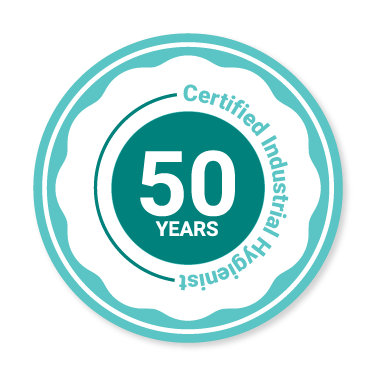
A Lifetime of Occupational Health Leadership:
Celebrating Robert Cashins’ 50 Years as a Certified Industrial Hygienist
On October 26, 2025, I proudly marked a significant milestone in my professional journey: 50 years as a Certified Industrial Hygienist.
This journey has been both long and deeply rewarding. Along the way, I’ve had the privilege of meeting countless remarkable individuals and witnessing extraordinary workplaces and practices. The experiences I’ve gathered over the decades are truly unforgettable.
I hold deep admiration for the workers who perform challenging and often hazardous tasks with unwavering dedication. Words cannot fully express my appreciation for their resilience and commitment. It has been profoundly gratifying to know that, in my own way, I’ve contributed to helping many of them lead healthier lives.
My career began as a technician at the MIT Occupational Health Services lab, where I was first introduced to the field of industrial hygiene. From there, I joined the Massachusetts Department of Labor’s Division of Occupational Hygiene, where I learned how to be an industrial hygienist. These formative experiences led me to the consulting business with Bolt Beranek and Newman, and ultimately to a bold decision in 1981: founding Cashins & Associates, Inc.
My wife, Mary, and I embarked on this venture together, unaware of the joys and challenges that lay ahead. Through perseverance and shared vision, we built a thriving family business—now spanning three generations of Cashins working together. It is a privilege to work alongside my family and the dedicated team members, present and past, who have been instrumental to our success.
The field of industrial hygiene has evolved dramatically over the years. When I began at MIT in the mid-1960s, OSHA was still a concept. At the Massachusetts Department of Labor, we relied on electric pumps and manual sampling devices, some of which required hand-cranking to maintain airflow. Computers and cell phones were nonexistent, and sampling was limited to short durations rather than full-shift monitoring.
I’ve always believed that process sampling to assess sources of contamination remains one of the most effective methods for evaluating exposure potential and identifying control strategies.
Today, the landscape has transformed. OSHA regulations, battery-powered sampling equipment, real-time monitoring, and now artificial intelligence have revolutionized our profession. With vast data and insights at our fingertips, industrial hygienists are better equipped than ever to make informed decisions. Yet, the essence of our work remains unchanged: evaluating processes, implementing controls, and ensuring the health and safety of workers.

